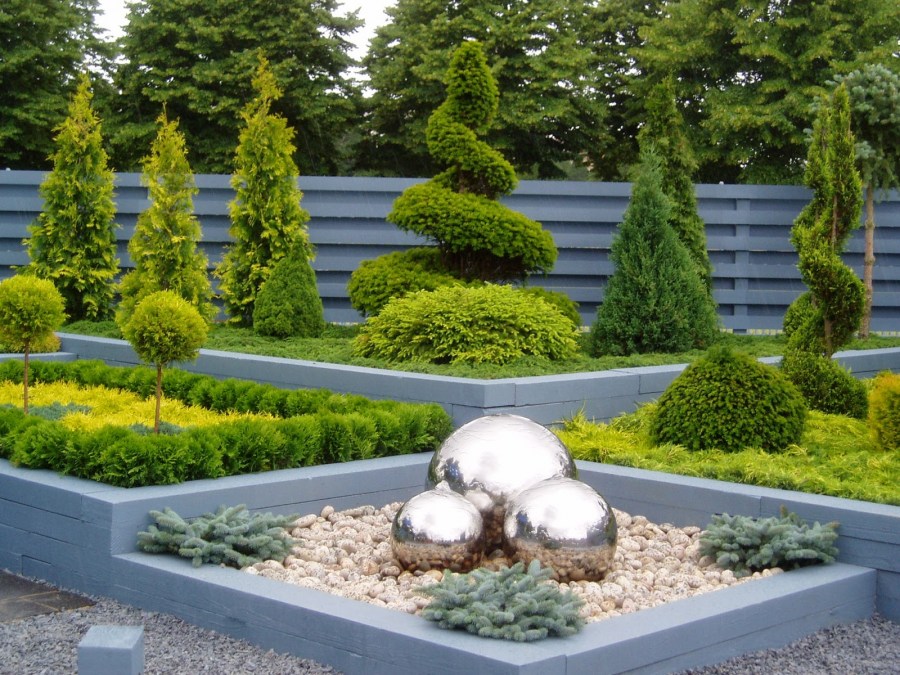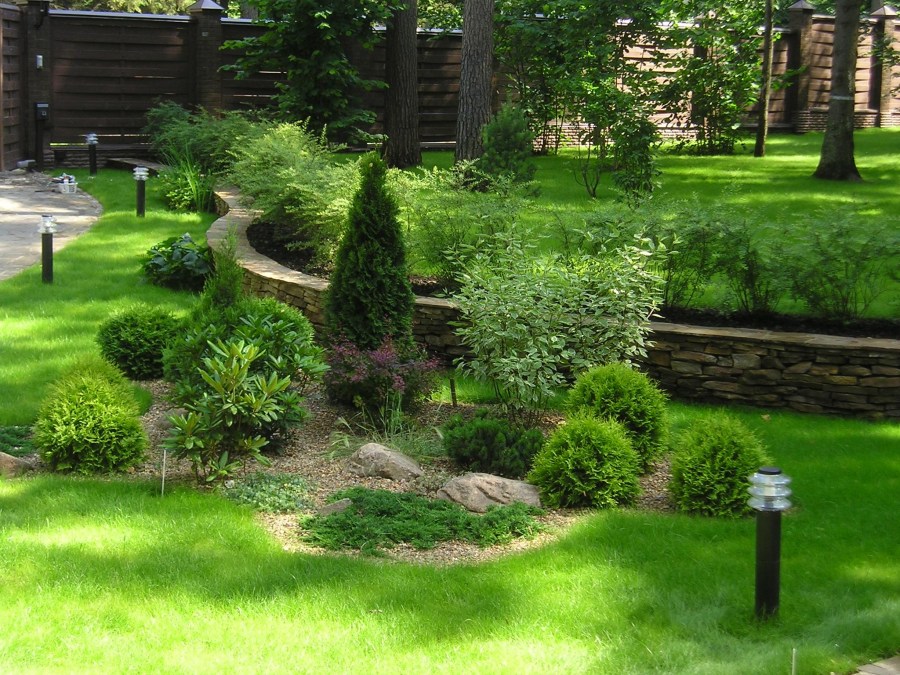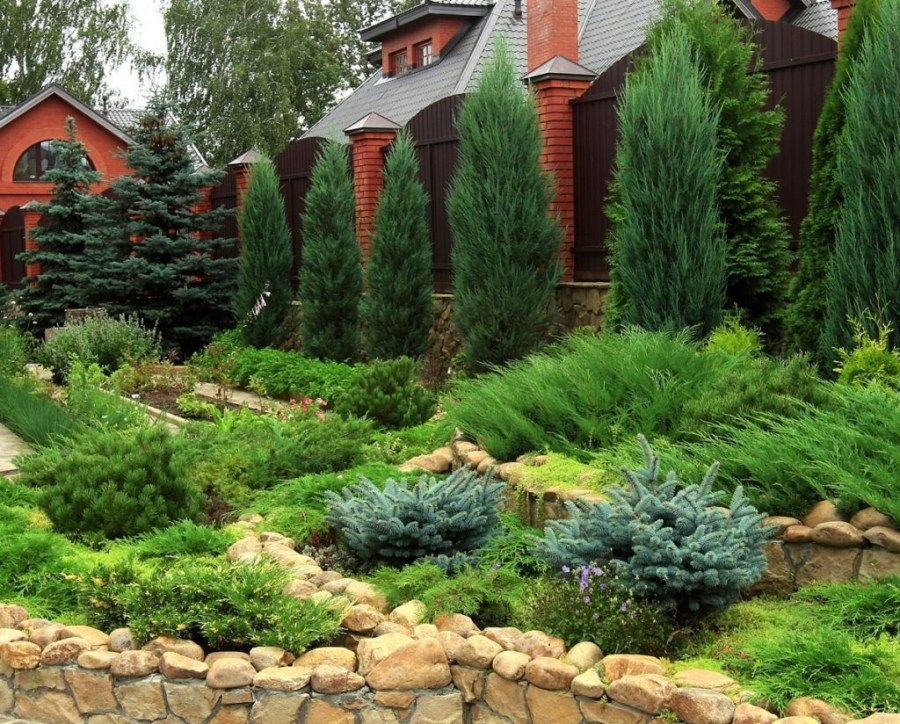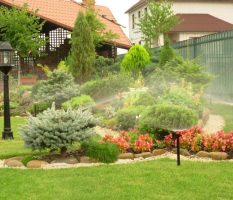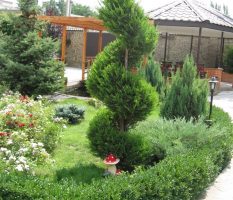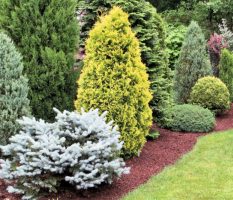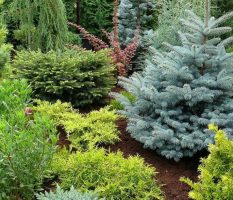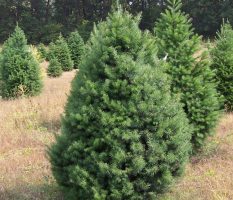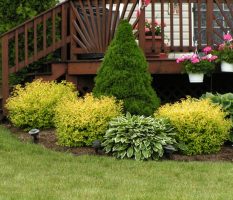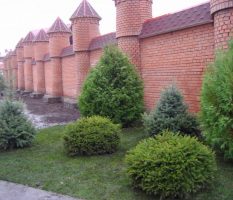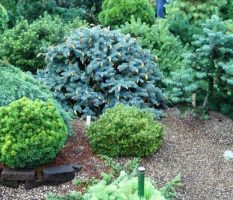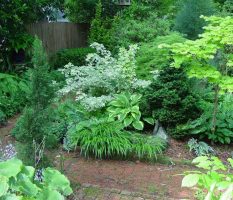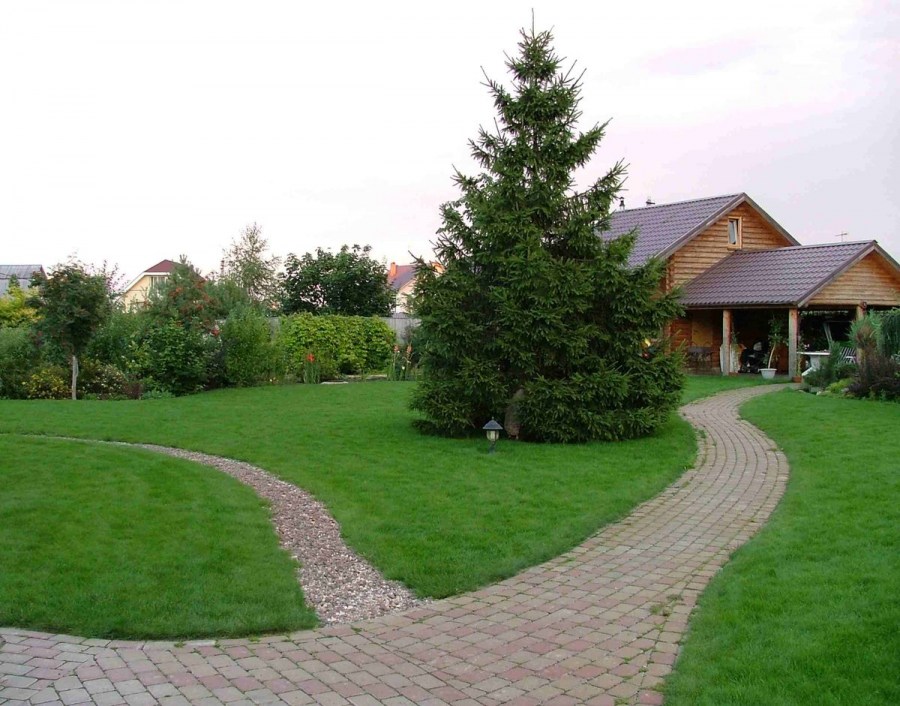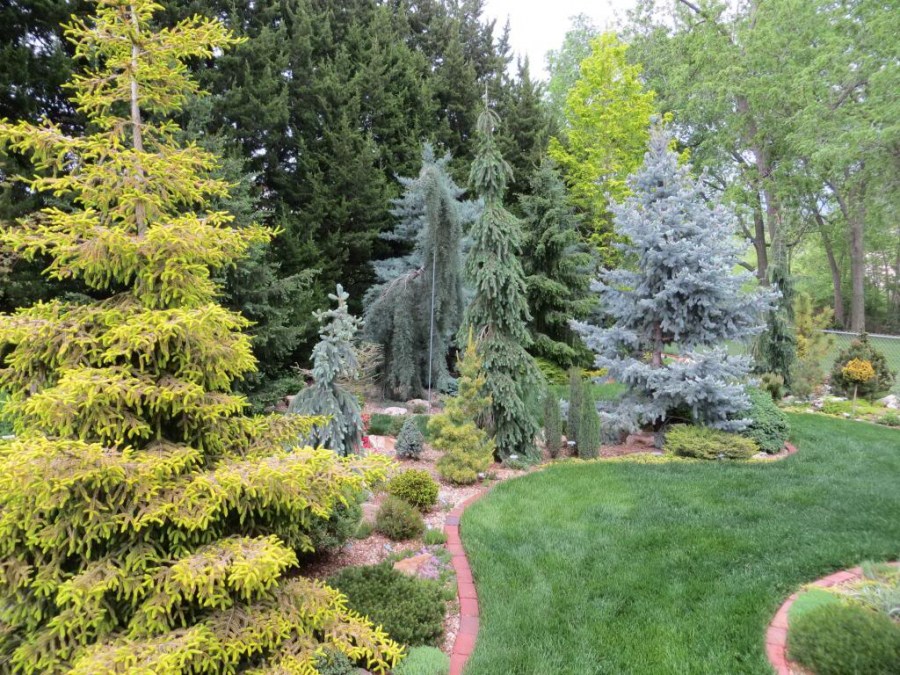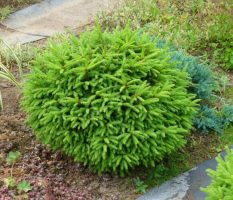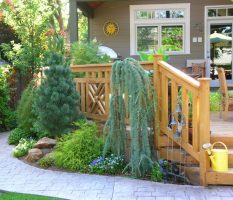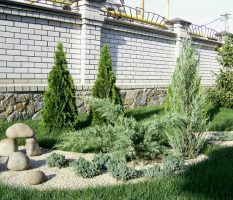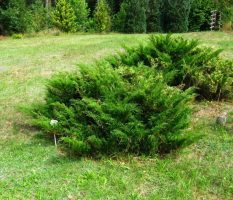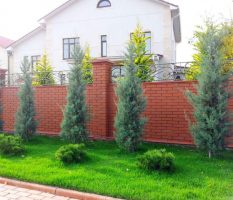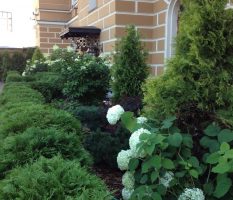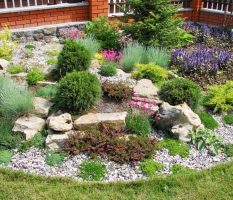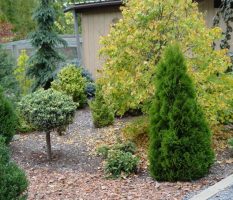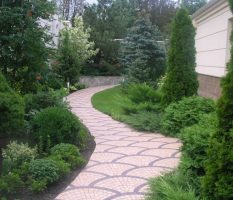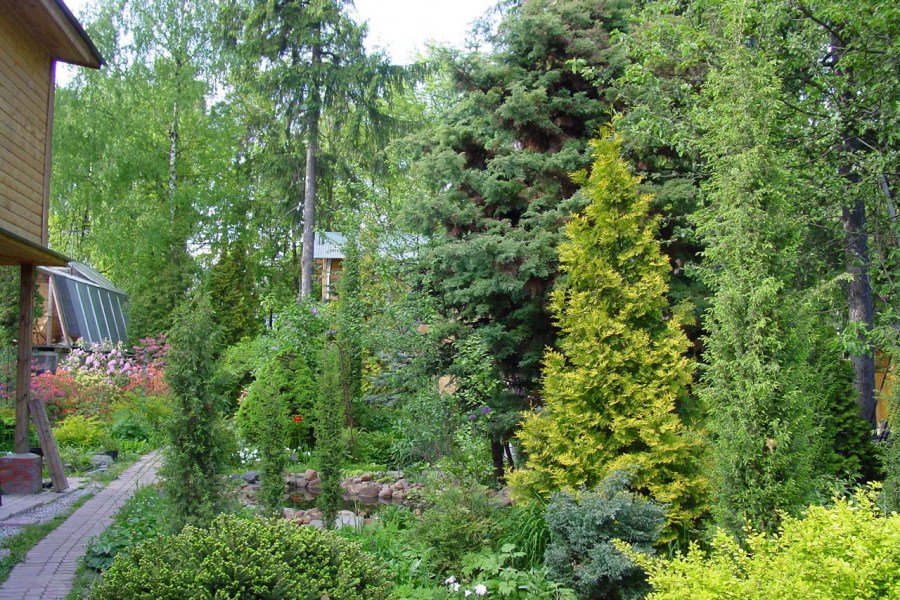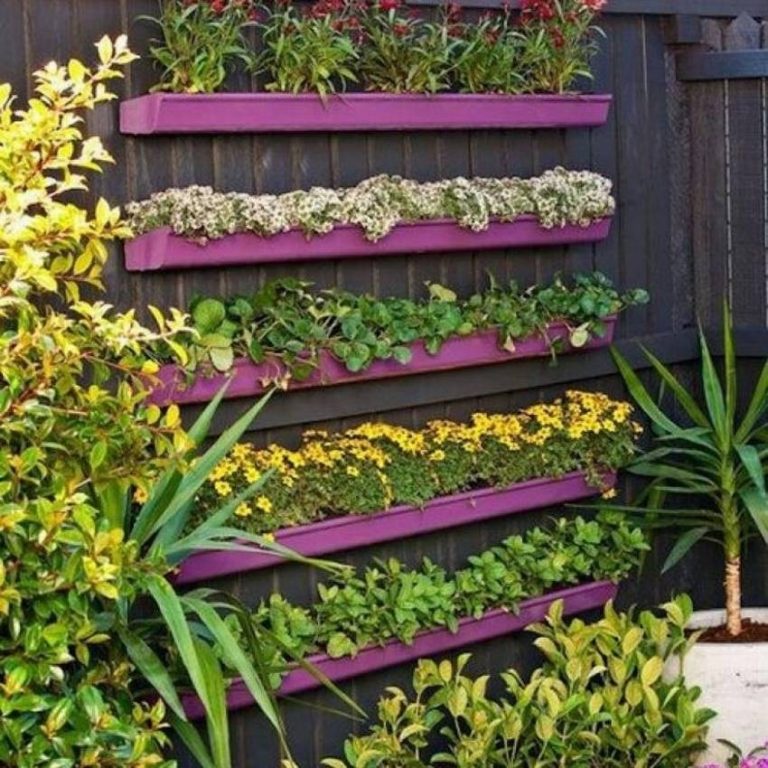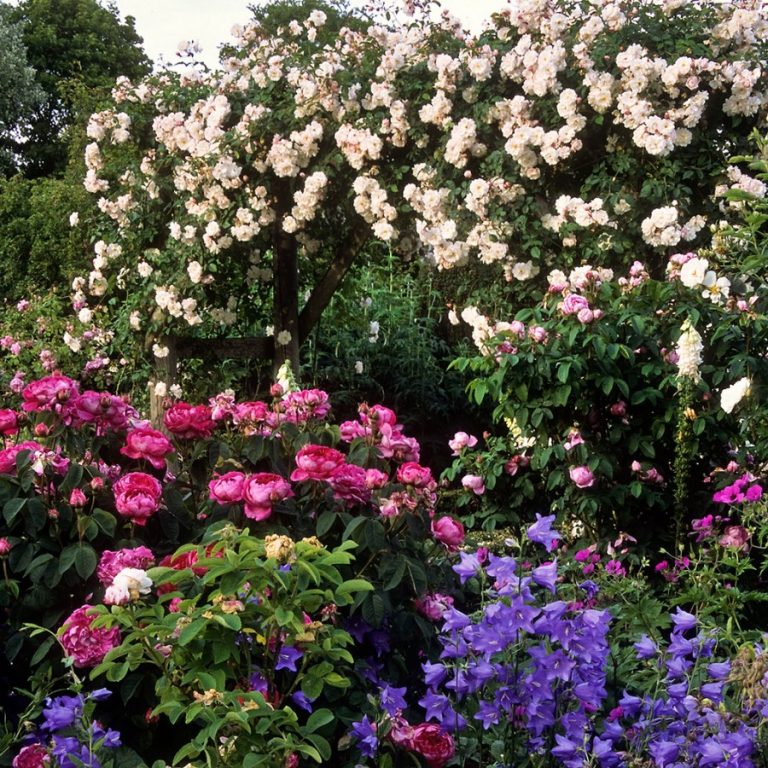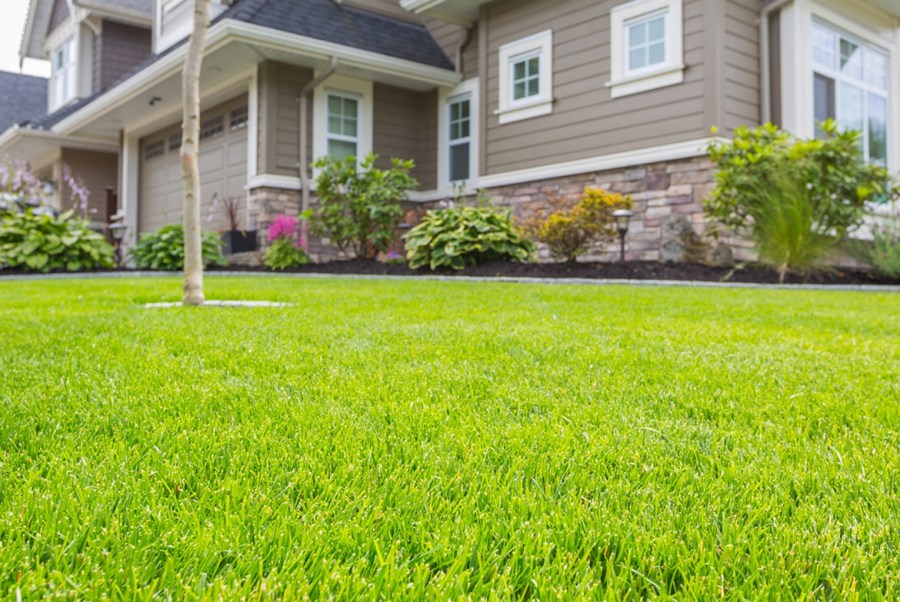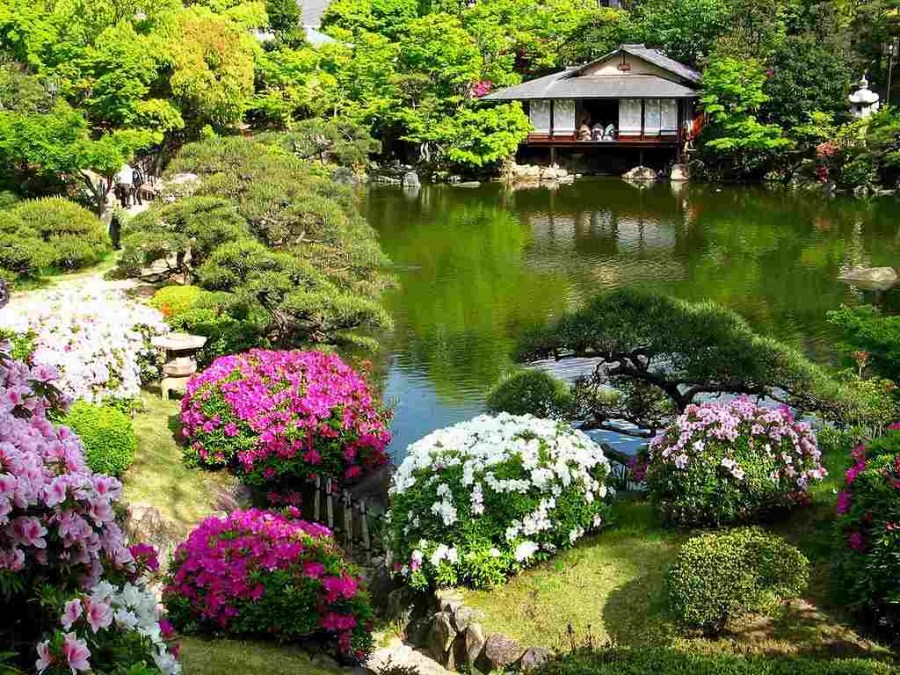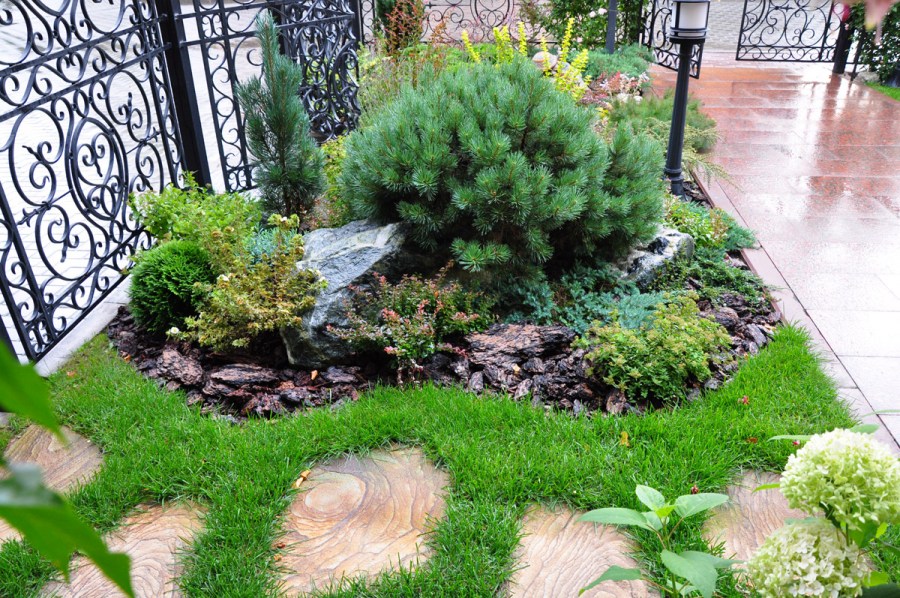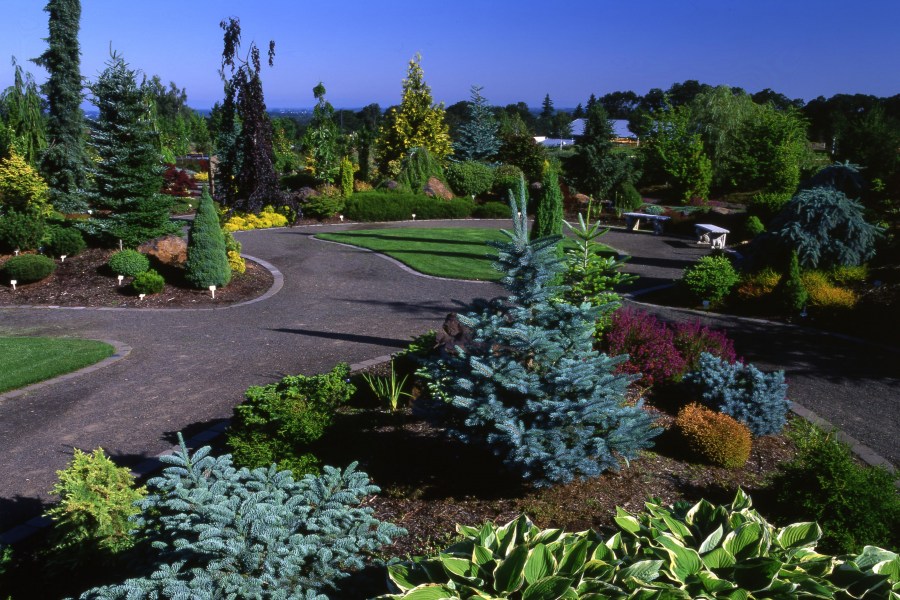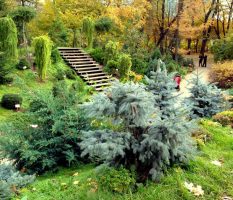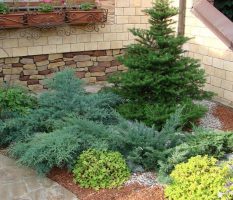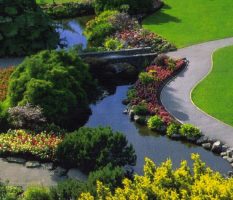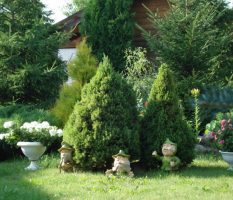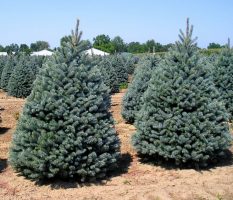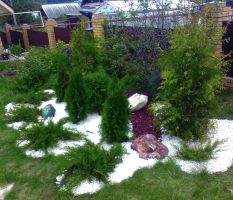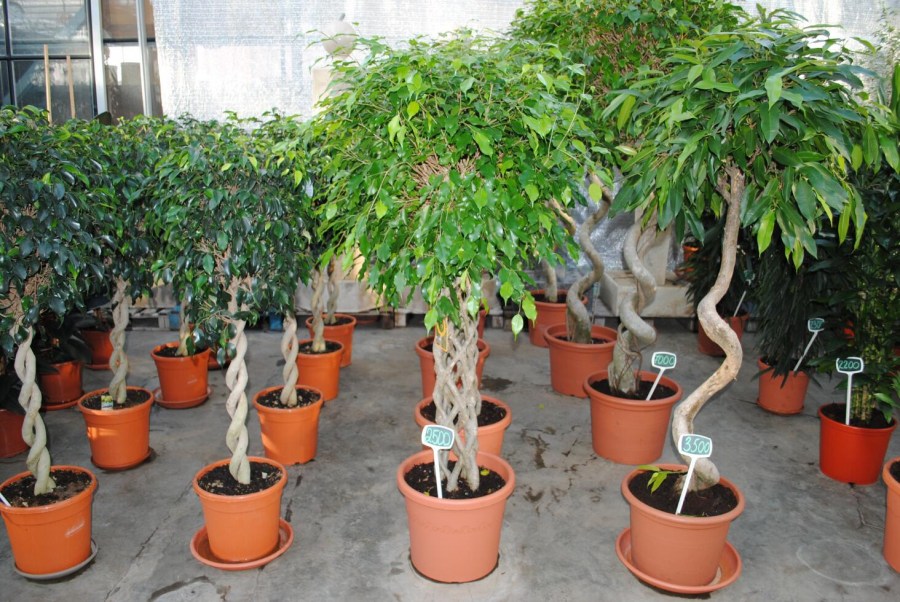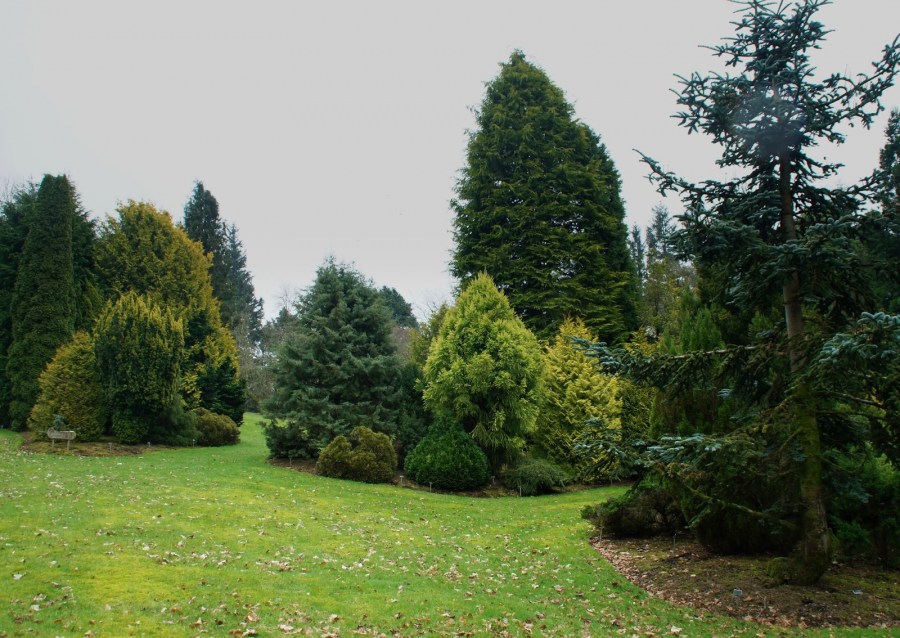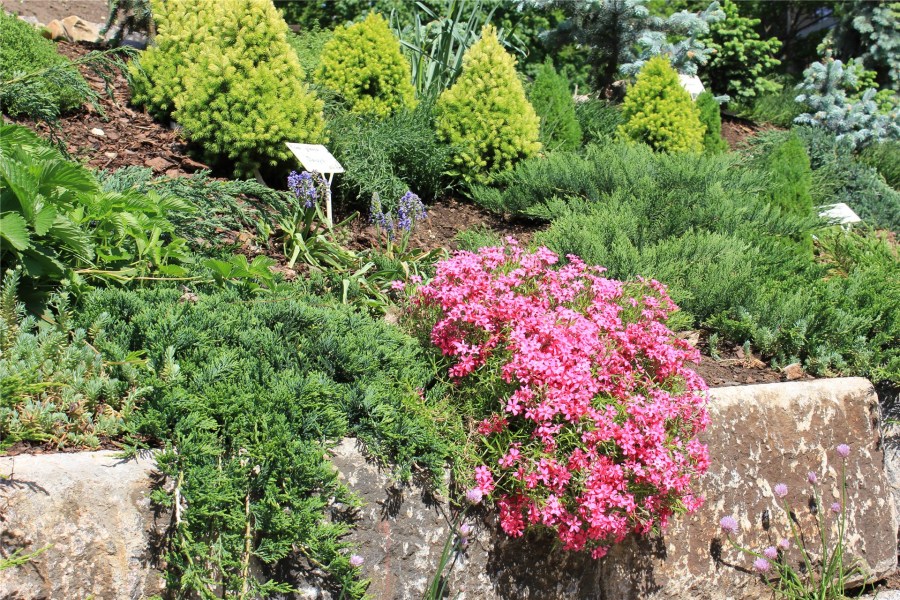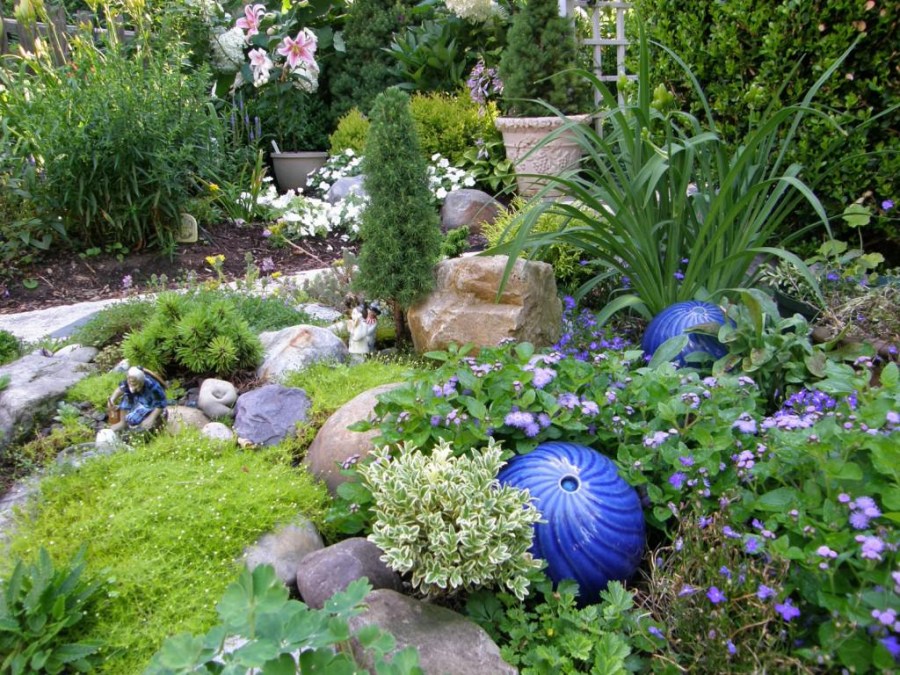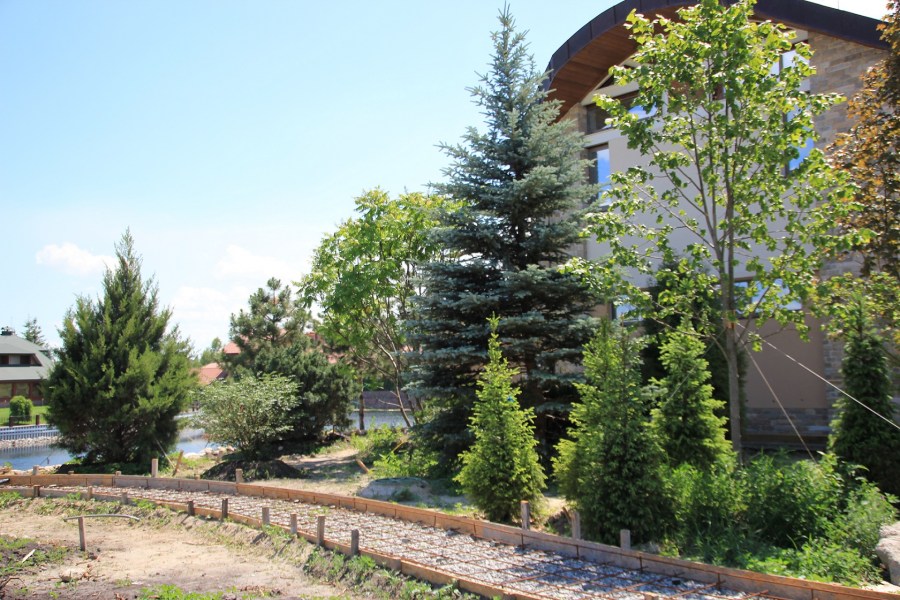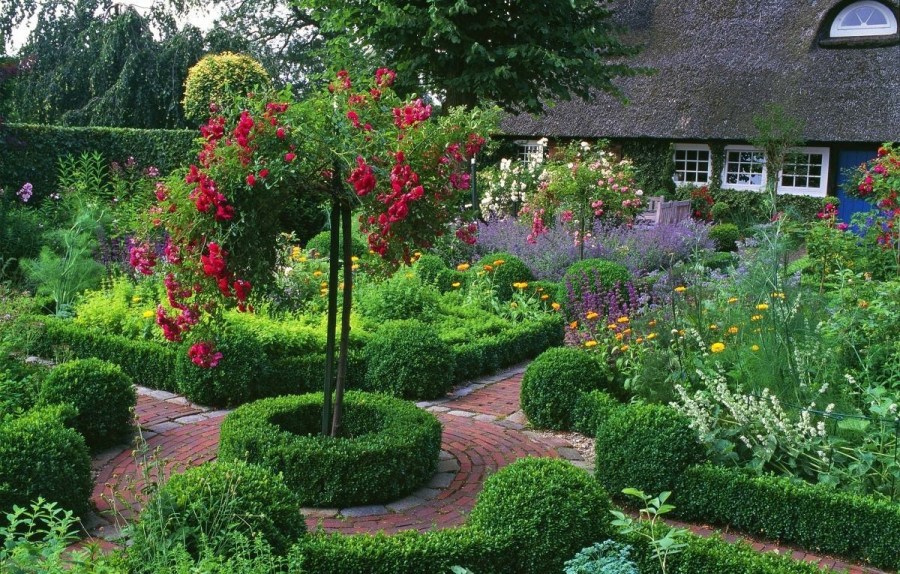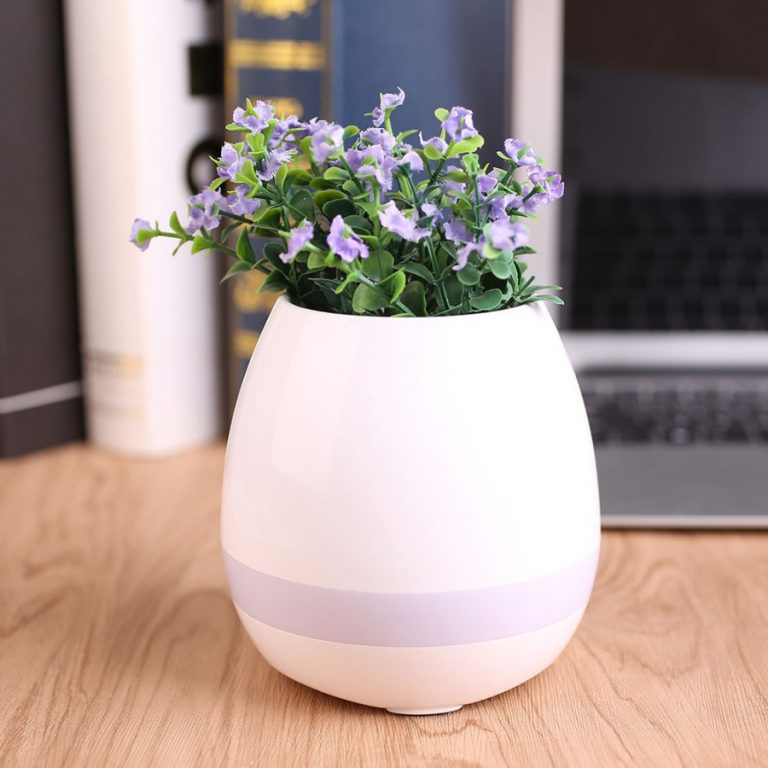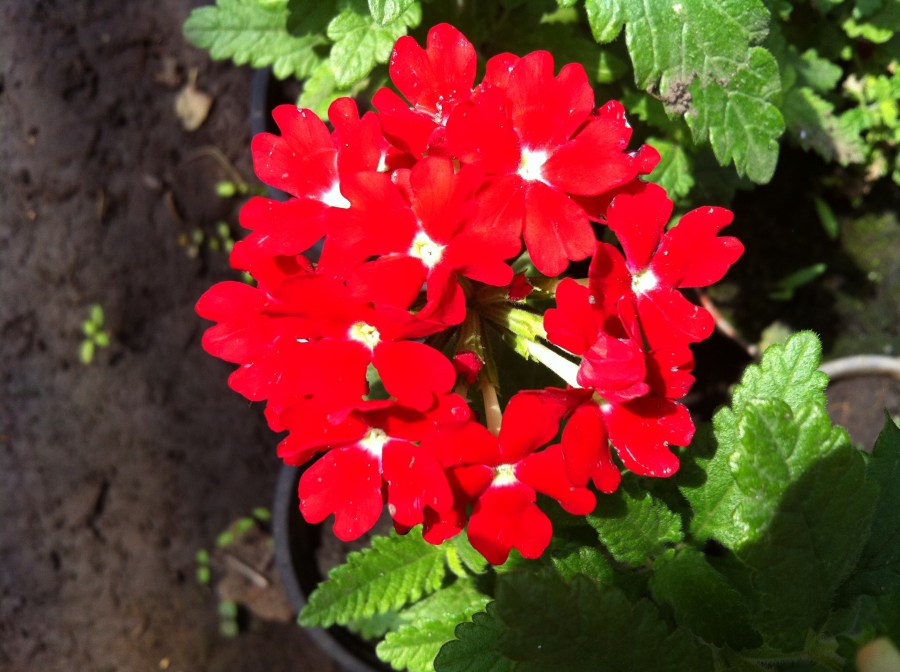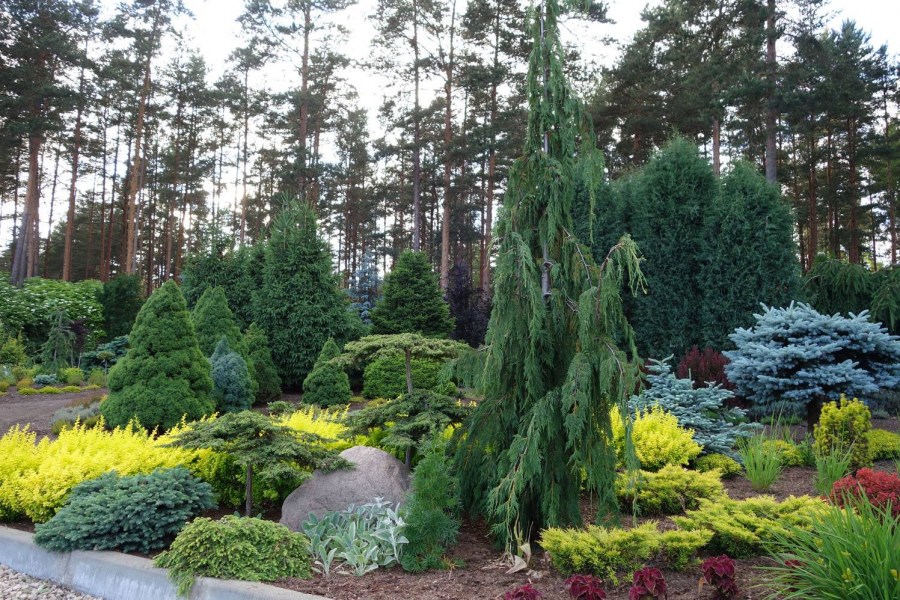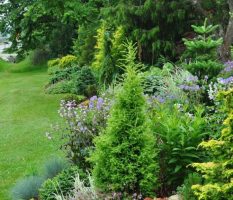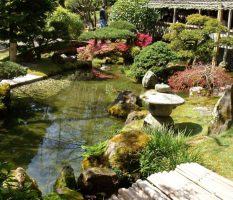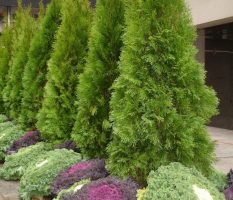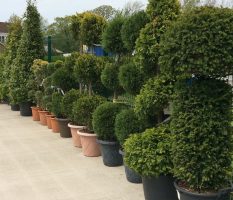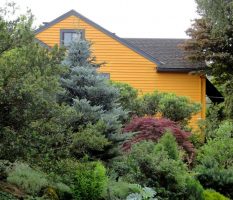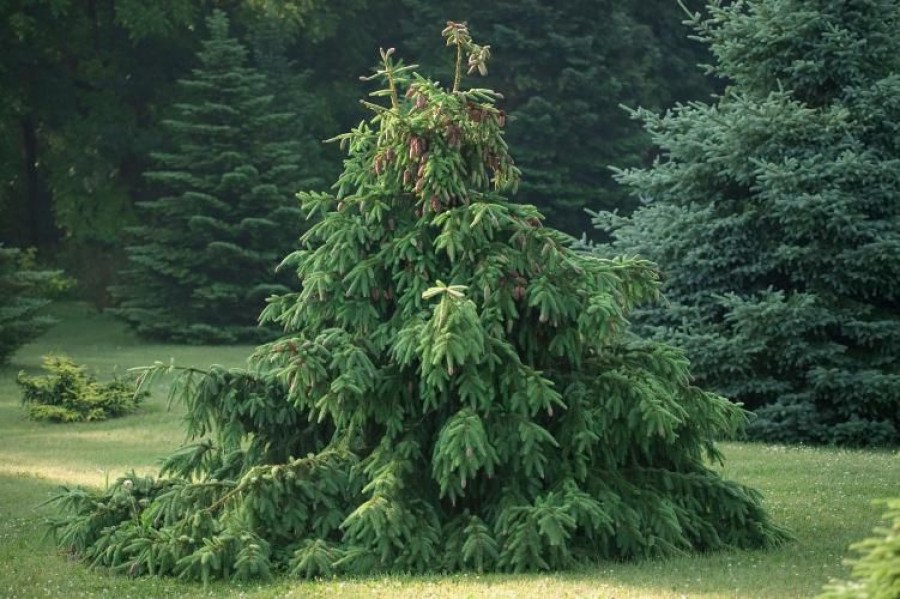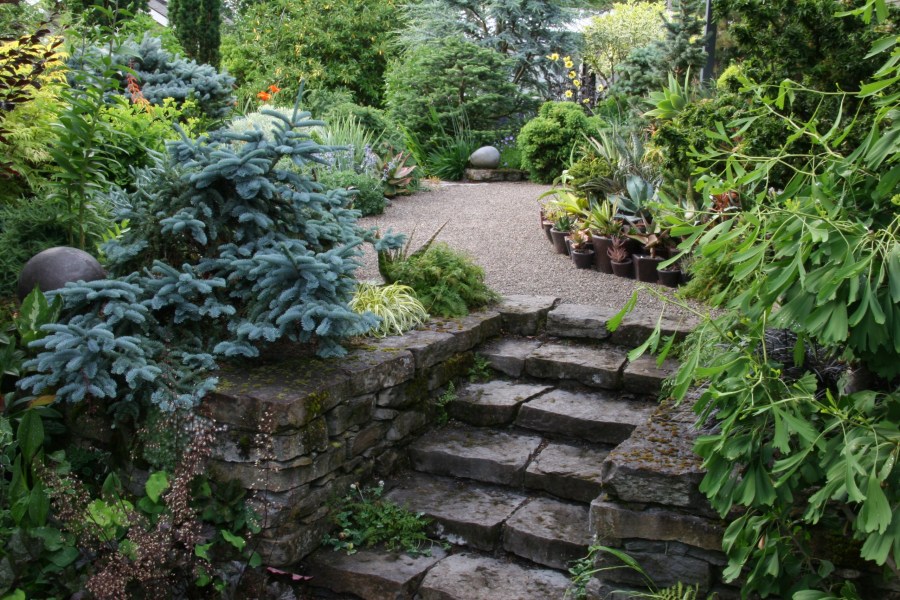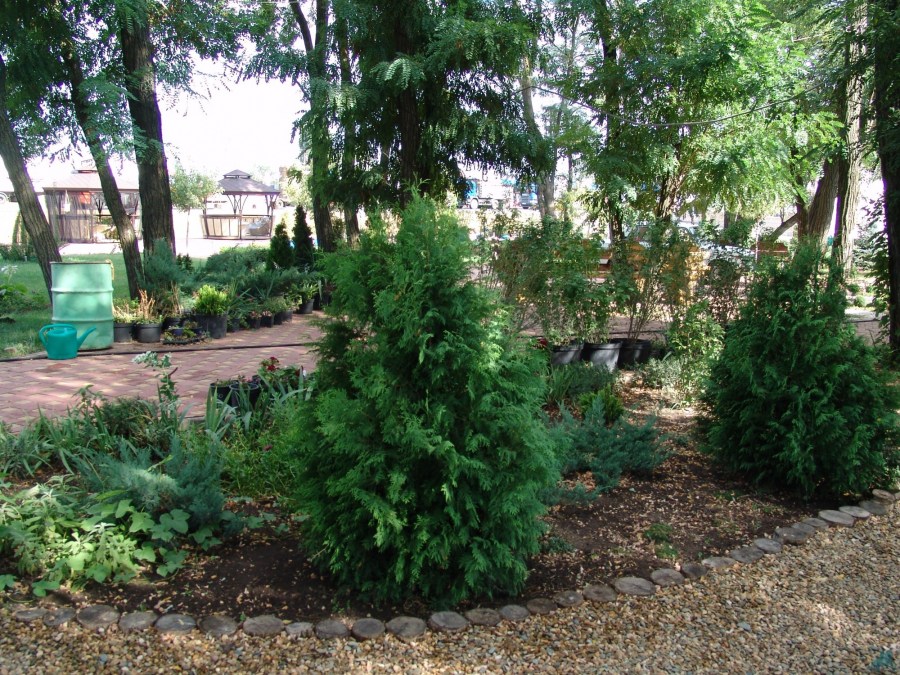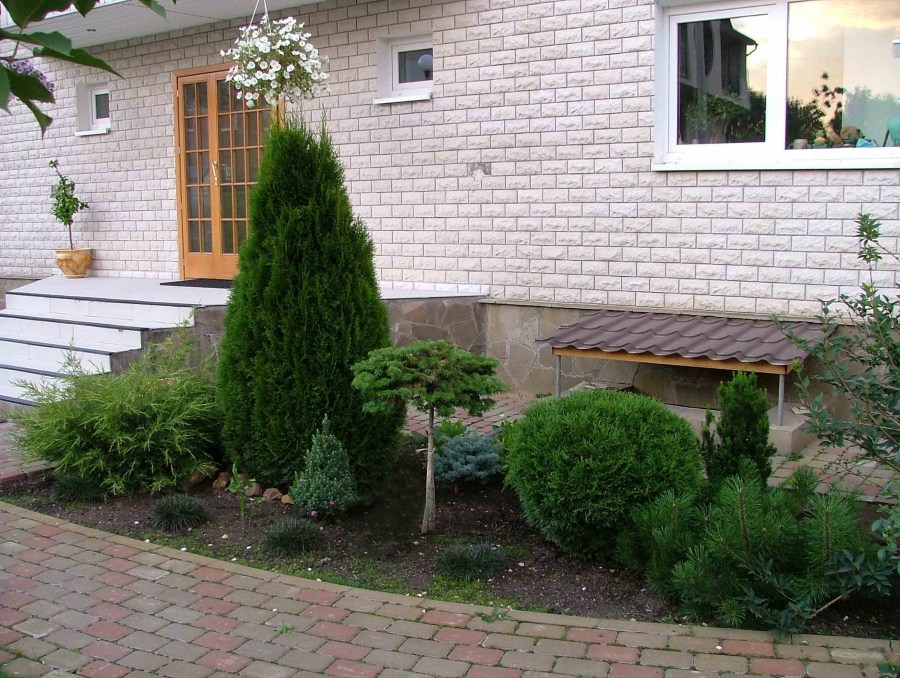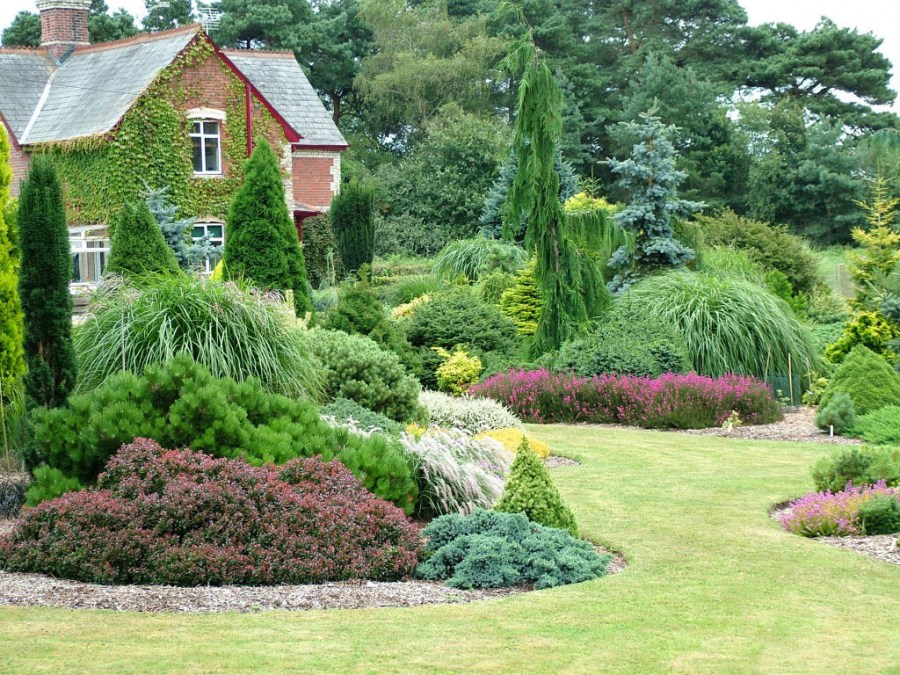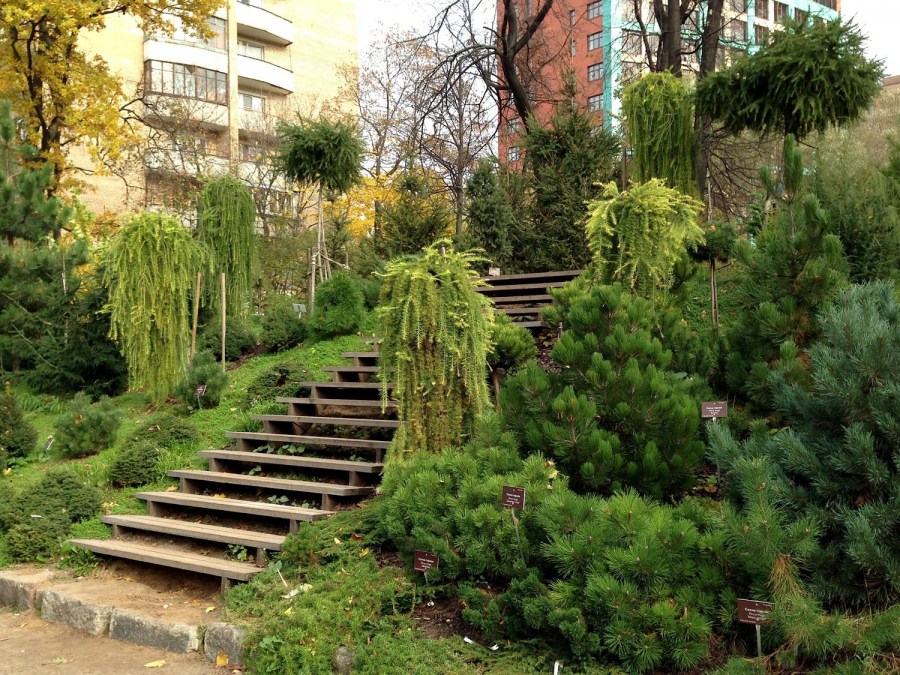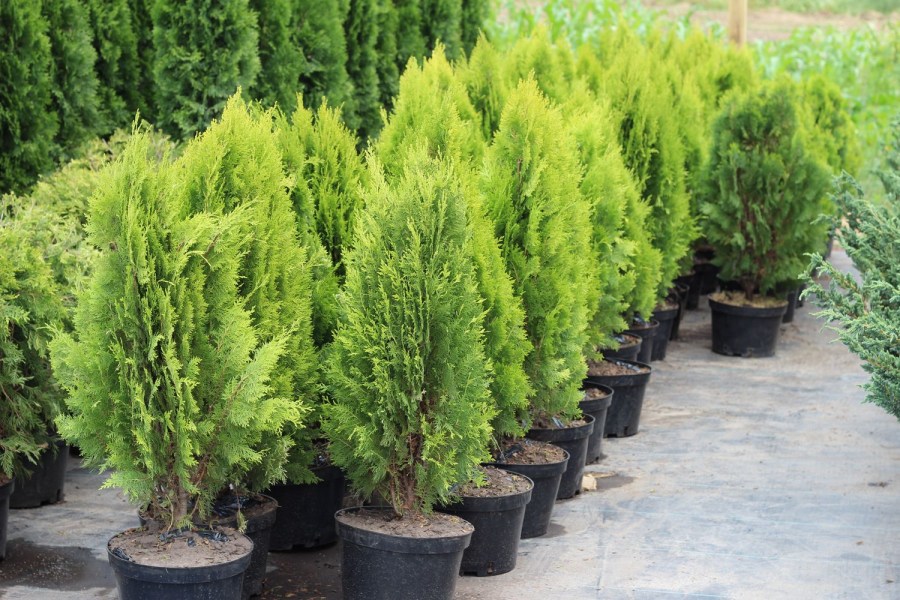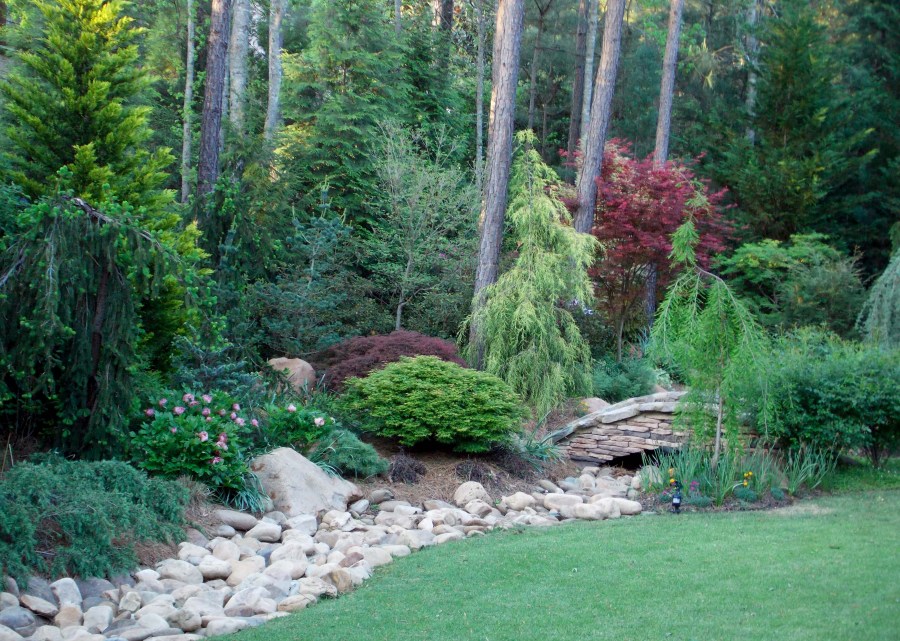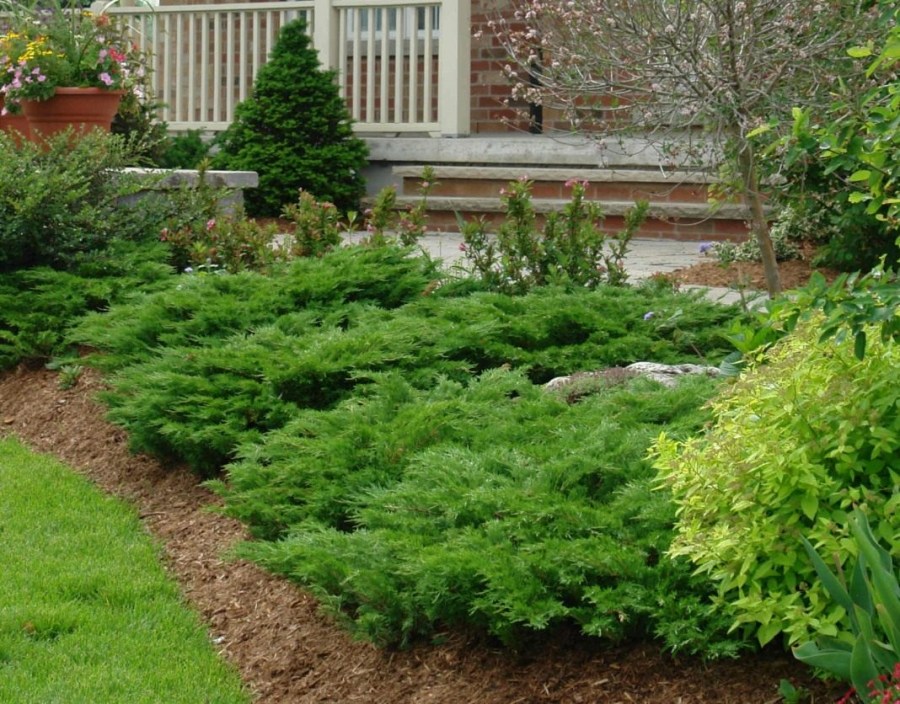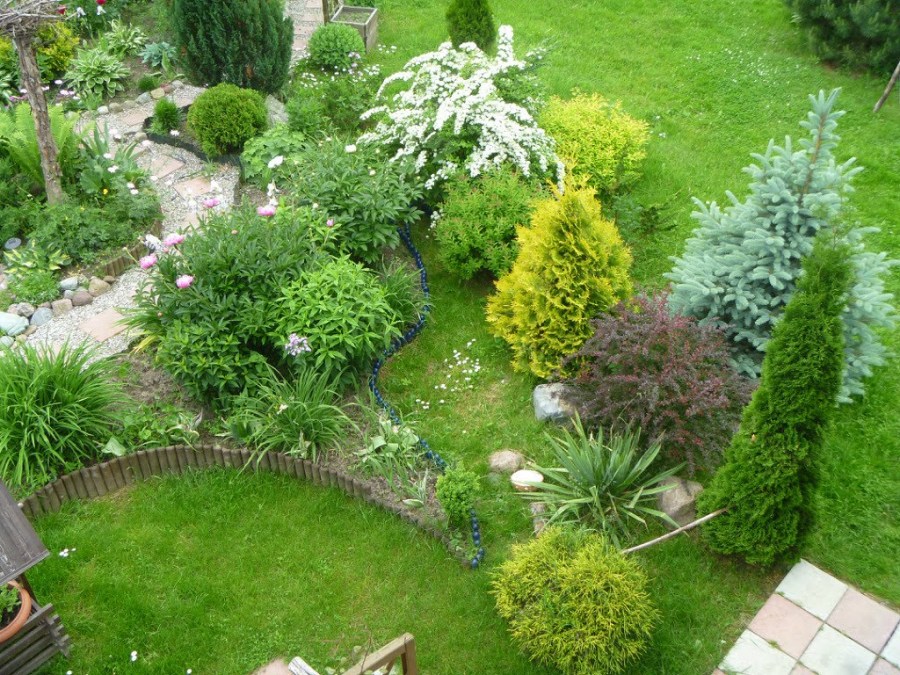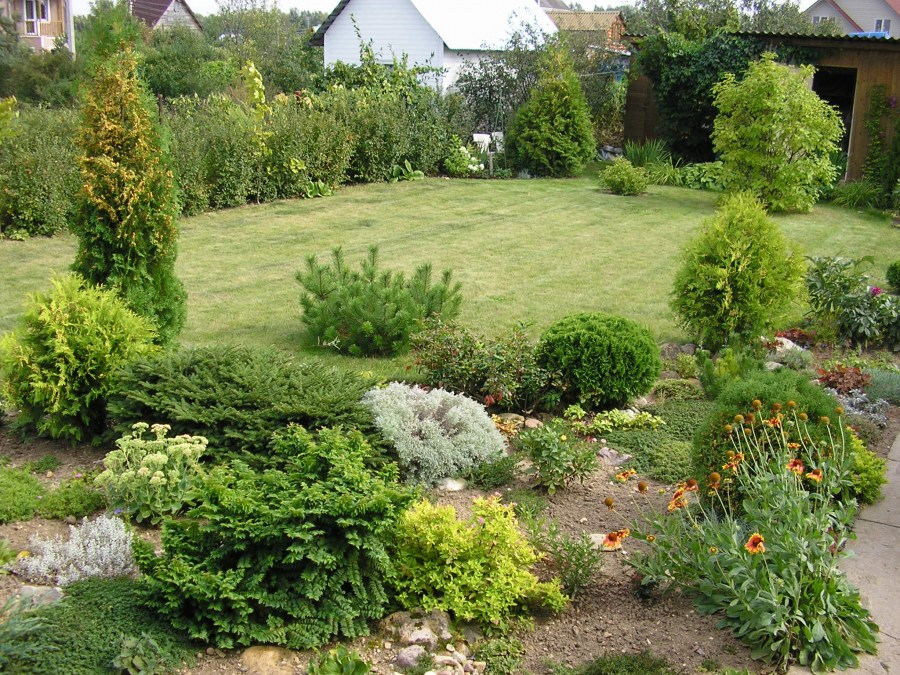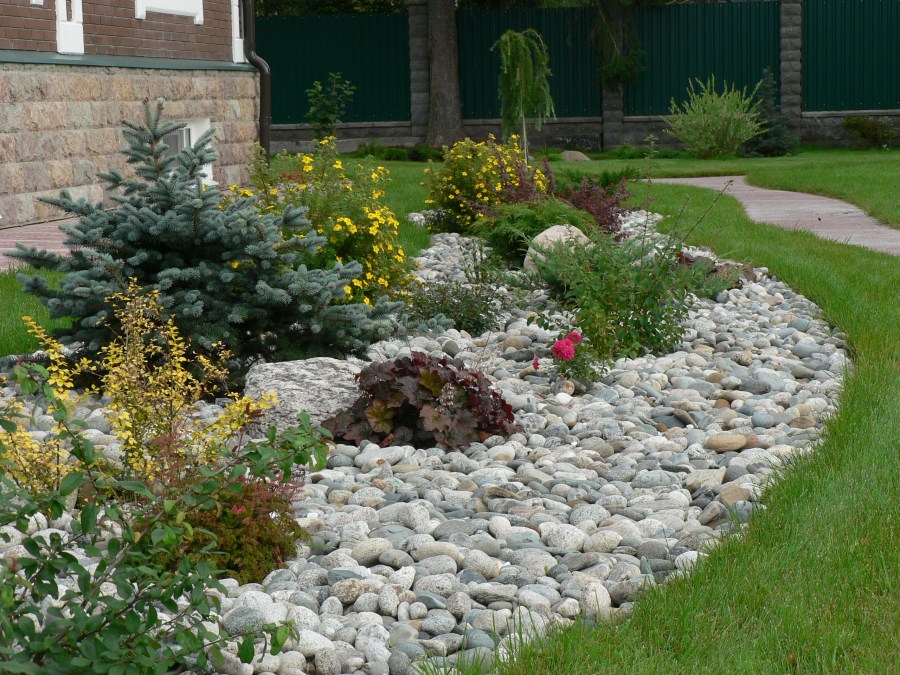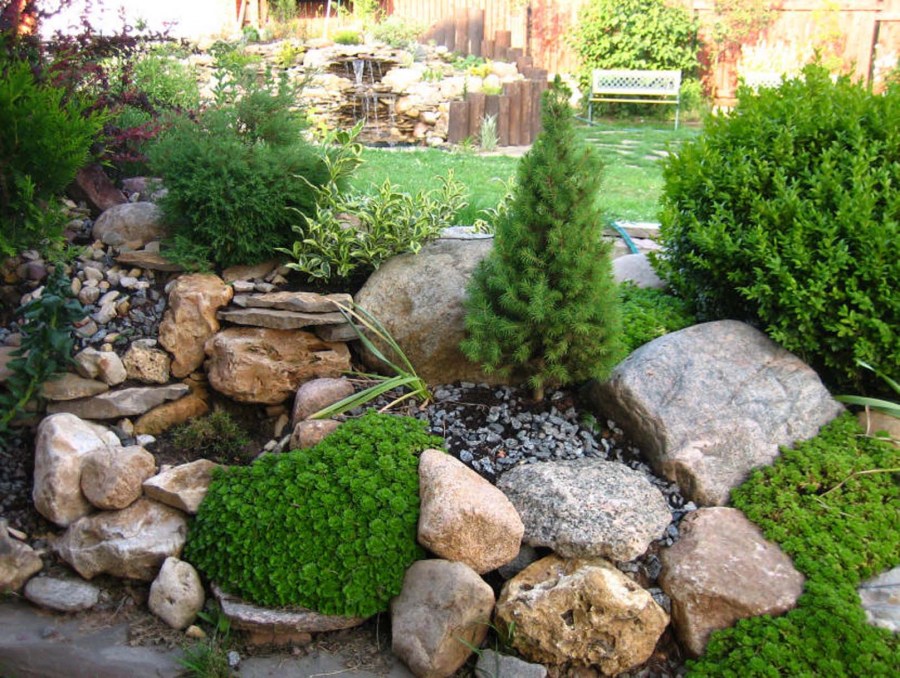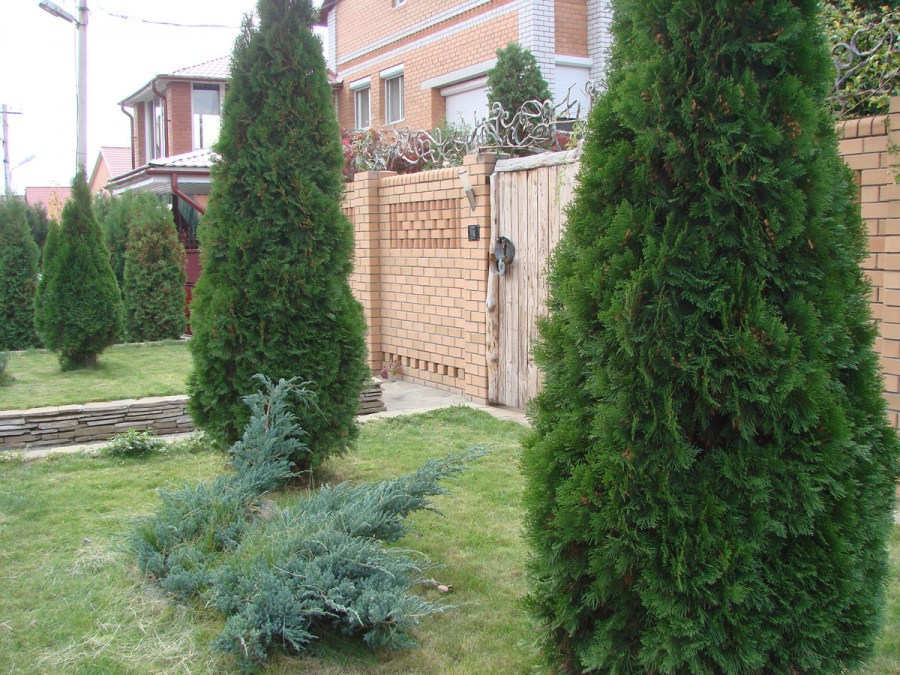Conifers for the garden (120 photos) - description of the features of use and rules of use
Each owner of the land, whether it is a large farm or a small front garden at the porch, comes up with the idea of planting a coniferous plant. Fortunately, in addition to fabulous firs and pines, there are hundreds of varieties of ornamental shrubs and trees that unrecognizably change the appearance of the site, giving it a special charm at any time of the year.
The aesthetic pleasure and comfort created by these evergreen friends of a person can be attributed to their functional benefits, because natural beauty motivates a person to a healthy lifestyle, and rewards him for the hard work on earth.
In addition, if a living fence, or other landscaping project, is conceived, coniferous plants may be the best choice. It is generally accepted that they do not require special care and are unpretentious to the weather and soil.
But this statement is true only in comparison with exotic cultures, or, for example, the content of garden plantations.
Care Features
To maintain a healthy appearance of coniferous plants, they must be properly placed, planted, and in the first years of their life carefully follow the rules of care, providing moisture and temperature conditions necessary for plant growth.
Each species has its own parameters of soil composition, irrigation, light regime, but there are a number of general rules that will facilitate the process of planting and care.
- Seedlings and adult plants for transplantation are best purchased in the closest proximity to the planting site.
- A windless plot is ideal for planting most views, the best time is the end of April and the beginning of May.
- When planting, a small hole is dug, the roots of the seedlings are left close to the surface and covered with earth.
- Moisture accumulation is unacceptable: special drainage is needed.
- It is necessary to strictly observe the norms of the permissible distance between plants.
- In the first years, abundant watering and protection of the roots from frost are necessary, the branches of young trees need to be cleaned of snow, the roots covered with spruce branches.
Addiction to evergreens, which are distinguished by magnificent beauty and healing properties, is not surprising, but for their successful cultivation you will need knowledge about the characteristics of a particular variety, special attention and patience.
Plant selection and placement
The wonders of plant growing allow you to pick up decorative conifers for any garden. It is only necessary to reasonably assess the existing conditions, and choose a plant that matches the climate, soil composition, the peculiarities of the location of the site and harmony with other cultures.
With a single landing or composition, you must adhere to the basic rule of landscape design. The viewpoint should be at least twice the height of the tree.
With a single planting of high and medium conifers, you need special care for the adjacent area. It is preferable to surround the tree with a green lawn.
When creating evergreen ensembles, at least two conifers with crowns of various shades are used. The photo shows examples of combining several types of conifers in rocky compositions and gravel gardens.
Tall conifers
Varieties of pine trees are tall trees with a wide crown. These most unpretentious of the evergreens require care only in the first year after planting. They tolerate heat and frost well, but there are certain requirements for the landing site.
Another popular garden pet is the blue spruce, which reaches a height of more than 10 meters and a width of up to 4 m.Juniper grows to the same standard dimensions for coniferous plants, which was called a pencil tree.
Larch is a coniferous plant that annually drops its cover, is unpretentious to the composition of the soil, is distinguished by longevity and adds 1 meter per year, reaching a height of 35 m.
Fir also has a relatively high growth rate, but these beautiful, pyramidal trees stretched to the top need protection from the winds and loose and fertile soil.
The cedar is rightfully considered the monarch of a coniferous tribe. He lives more than five centuries, but grows very slowly. With a happy combination of circumstances and proper care for 20 years, you can grow a three-meter tree.
But after 50 years, this already unpretentious hero compensates for the long wait with its unique and majestic beauty.
With the exception of rare specially bred varieties, tall trees need light and space for an expanding breadth of the root system. An aesthetic factor is also important - tall trees require wide viewing, and look better at a distance.
Medium-sized conifers
This type of plant includes trees and shrubs of equal human height - from one and a half to two meters. These include, first of all, cultivated varieties of tall ones - pines, spruce, larch, juniper and fir.
Features of his care are preserved, only the need for free space is reduced, dwarf conifers for the garden can be grown in partial shade. At the same time, growth retardation is maintained, they grow by a maximum of 15 cm per year, but are quite adapted for transplantation and you can buy perennial trees in nurseries.
Yew (yew) - evergreen shrub, grows well in places protected from wind and sun. Its dark green needles and red fruits can decorate any composition, hedges for gardens and parks with tall trees are also created from it.
There are hundreds of varieties of this shrub with various forms of needles and crowns. It lends itself to pruning, so it is often used in artistic landscape compositions.
Thuja with soft needles, reminiscent in structure of snowflakes and bluish cones, is known to all city dwellers. Due to its unpretentiousness, it is planted perimeters of parks and city lawns.
This ornamental plant, which has become familiar with hedges, can be revealed in a special way in picturesque compositions with other evergreens, and also become a wonderful background for bright flower beds.
Coniferous trees and shrubs of medium height are most suitable for growing in a decorative garden. They look equally good in large and small spaces, with their help you can build live fences, alleys and make zoning of the site.
They are also a key element of alpine slides and other decorative compositions. In landscape design, common to all conifers, with the exception of cedar, is also important quality - they easily tolerate transplants.
Miniature conifers
Conifers up to 50 cm tall practically do not exist in nature. These are breeding varieties of all popular trees.
Given that in the first few years they need special care, plants designed for decorating open areas can be grown in tubs. They are also widely used in small coniferous gardens and green corners indoors.
Photo conifers for the garden
Cherry tree - 80 photos of a tree: planting, reproduction, treatment, harvesting
Flowerbed of stones: 85 photos of beautiful and stylish modern projects
Chicken house for giving - 95 photos of the installation features and installation rules
Garden tools: 130 photos of the optimum tool of a worthy kachevsev
Join the discussion:
